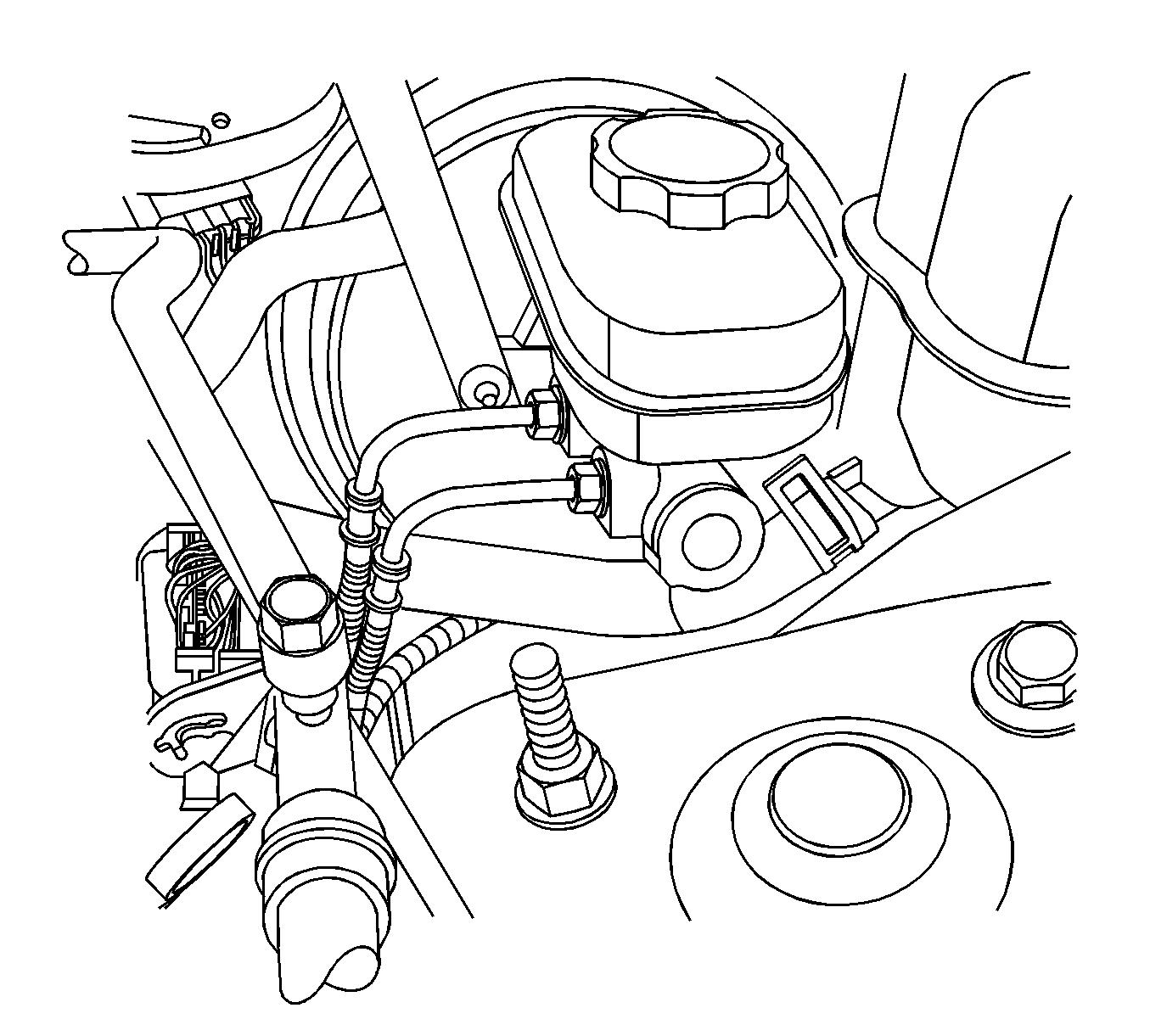For 1990-2009 cars only
Caution: Refer to Brake Fluid Irritant Caution in the Preface section.
Notice: Refer to Brake Fluid Effects on Paint and Electrical Components Notice in the Preface section.
Removal Procedure
- Disconnect the electrical connector from the brake fluid level sensor.
- Disconnect the brake pipes from the master cylinder.
- Plug the open brake pipe fitting ends.
- Remove the lower air inlet panel support bracket retainer from the master cylinder mounting stud.
- Pull out air inlet panel support bracket retainer, then rotate it out carefully.
- Remove the 2 master cylinder mounting nuts.
- Remove the master cylinder.
- Remove the reservoir from the master cylinder if it is to be reused on a replacement master cylinder. Refer to Master Cylinder Reservoir Replacement.
Important: Install a rubber cap or plug to the exposed brake pipe fitting end to prevent brake fluid loss and contamination.

Installation Procedure
- Install the brake master cylinder reservoir to the master cylinder if it was removed previously. Refer to Master Cylinder Reservoir Replacement.
- Bench bleed the master cylinder. Refer to Master Cylinder Bench Bleeding.
- Install the master cylinder to the vacuum brake booster.
- Install the 2 brake master cylinder mounting nuts.
- Carefully rotate the air inlet panel support bracket onto the master cylinder mounting stud.
- Carefully install the air inlet panel support bracket retainer to the master cylinder mounting stud.
- Remove the plugs from the brake pipes.
- Install the brake pipes to the master cylinder.
- Connect the electrical connector to the brake fluid level sensor.
- Bleed the hydraulic brake system. Refer to Hydraulic Brake System Bleeding.

Notice: Refer to Fastener Notice in the Preface section.
Tighten
Tighten the 2 brake master cylinder mounting nuts to 27 N·m (20 lb ft).
Tighten
Tighten the brake pipe fittings at the master cylinder to 38 N·m (28 lb ft).
